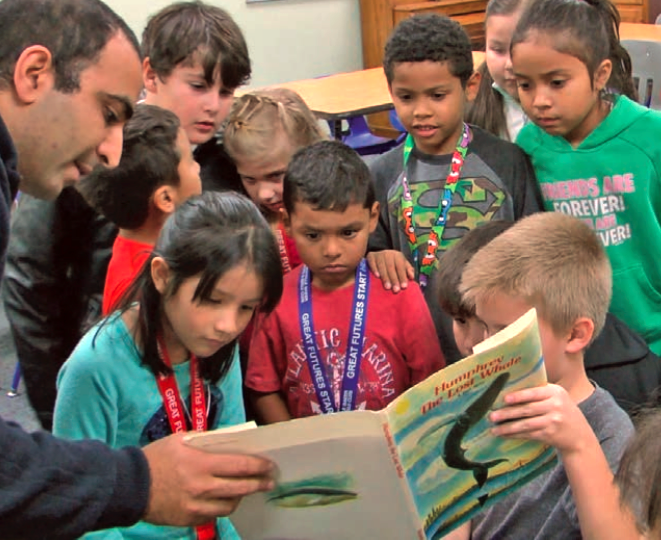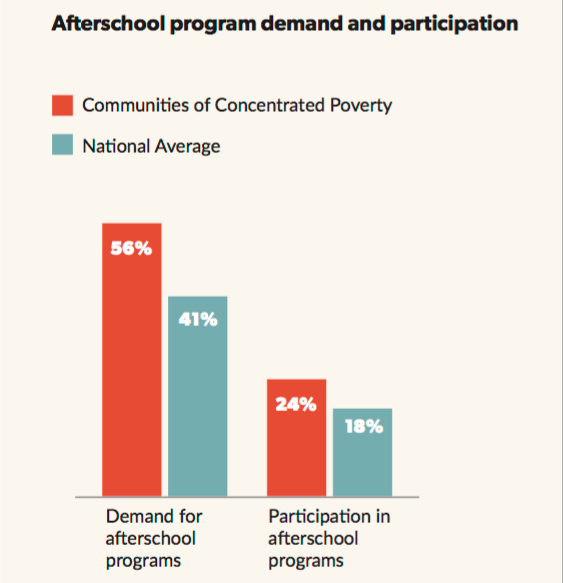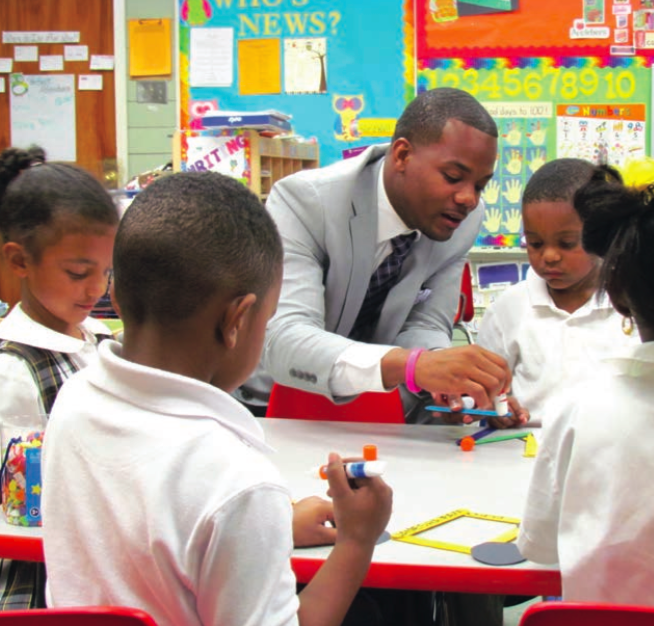
Photos by Afterschool Alliance
A high unmet demand for after-school programs exists in areas of concentrated poverty in the United States and action should be taken to meet the need, according to a new report from the Afterschool Alliance.
More than 20 million children live in areas of concentrated poverty in the United States, according to U.S. Census Bureau figures.
Many children in these high-need areas are not being served by the very programs that could help them do better in school and in their lives, according to a new report by the Afterschool Alliance.
Only one in four children in poor neighborhoods is enrolled in an after-school program, said Jen Rinehart, vice president of policy and research for the Afterschool Alliance.
“Lots more would be enrolled if programs were available,” she said.
The information is based on a survey or more than 30,000 households as part of the organization’s America After 3PM survey. More than half of children in areas of concentrated poverty who are not enrolled in after-school program would be if programs were available, the survey showed.
 After-school programs “serve as a lifeline” to families, Rinehart said. They enable parents to work and their children to have a safe place.
After-school programs “serve as a lifeline” to families, Rinehart said. They enable parents to work and their children to have a safe place.
Sixty-one percent of parents in these communities said it was hard to afford after-school programs.
While some parents paid reduced fees, a majority had to pay at least $61 per week, and 46 percent pay $80 to more than $100 per week, according to the report.
A 2015 report by the American Academy of Political and Social Science noted the increasing gap between low-income and affluent children’s access to activities outside of school that help them develop skills and interests as they move into adulthood.
“There’s a big spending gap,” Rinehart said. Middle-income families are paying more for outside activities and poorer families are not able to.

“Low income children have access to many fewer enrichment opportunities,” Rinehart said.
“That gap has gotten much wider since the 1970s,” she said.
“Research shows if we can begin to close the opportunity gap, we can begin to close the [academic] achievement gap,” Rinehart said.
The Afterschool Alliance is urging states to ensure that children in areas of concentrated poverty have access to programs through the federally funded 21st Century Community Learning Centers. Under the new Every Student Succeeds Act, states and local education agencies have greater control over funds.
The new law also provides funding for student support in after-school programs through
Title I “Targeted Assistance to Schools.”
The message from the Afterschool Alliance: Use this money.
“If we are serious about providing equal opportunity and building a workforce that can compete in a 21st century global economy, we must ensure that our most vulnerable children do not miss out on the supports and opportunities afterschool programs provide,” Afterschool Alliance Executive Director Jodi Grant said in a statement.






























